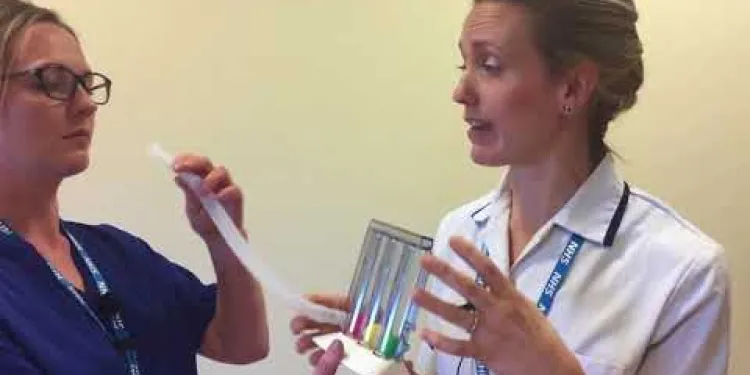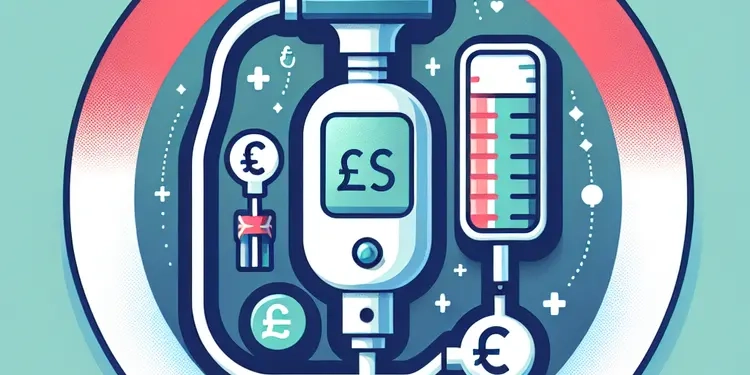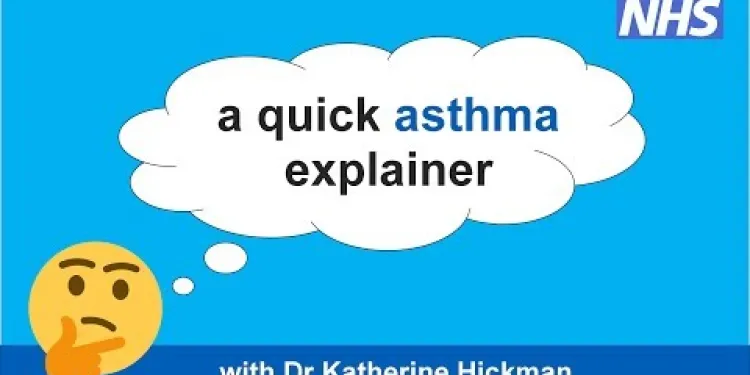Find Help
More Items From Ergsy search
-

Using Incentive Spirometry
Relevance: 100%
-

What incentives are provided for sustainable housing?
Relevance: 39%
-

What is an incentive spirometer in air physiotherapy?
Relevance: 39%
-

Can I combine the Plug-in Car Grant with other incentives?
Relevance: 36%
-

Can I combine the Plug-in Car Grant with other vehicle incentives?
Relevance: 35%
-

How is asthma diagnosed?
Relevance: 20%
-

Can air physiotherapy be done at home?
Relevance: 16%
-

Are there tax benefits for owning an electric car?
Relevance: 16%
-

Do electric motorcycles qualify for any grants?
Relevance: 16%
-

Can I receive an EV grant after purchasing the vehicle?
Relevance: 15%
-

Is the EV grant amount deducted from taxes?
Relevance: 13%
-

Are there any grants in the UK to help me buy an electric car?
Relevance: 13%
-

What should I consider when buying an electric car regarding grants?
Relevance: 13%
-

Is the EV grant available for leased vehicles?
Relevance: 13%
-

Are there grants for converting petrol/diesel cars to electric?
Relevance: 13%
-

Are there any grants for installing electric car chargers at home?
Relevance: 13%
-

Is there a grant for electric vans?
Relevance: 13%
-

What grants are available in the UK for electric car purchase?
Relevance: 13%
-

What is the current EV grant amount in the UK?
Relevance: 13%
-

Does the Plug-in Car Grant apply to commercial vehicles?
Relevance: 12%
-

Can I buy a Nissan electric vehicle in the UK?
Relevance: 12%
-

Is Tesla available in the UK?
Relevance: 12%
-

COPD | NHS
Relevance: 12%
-

Is the Porsche Taycan available in the UK?
Relevance: 12%
-

How does the EV grant affect the purchase price?
Relevance: 12%
-

An Asthma Explainer with Dr Katherine Hickman
Relevance: 11%
-

Does the EV grant apply to personal import vehicles?
Relevance: 11%
-

Why might I pay a significantly different rate from my neighbor?
Relevance: 11%
-

Do I need to repay the EV grant?
Relevance: 11%
-

Are there any conditions to qualify for the Plug-in Car Grant?
Relevance: 11%
-

Can businesses apply for the Plug-in Car Grant?
Relevance: 10%
-

Is the EV grant available for electric vans?
Relevance: 10%
-

Are there electric vans available in the UK?
Relevance: 10%
-

Are there grants for installing an electric vehicle charger at home?
Relevance: 10%
-

How long will the Plug-in Car Grant be available?
Relevance: 10%
-

Calls for Urgent Action on GP Shortages Across Rural England
Relevance: 10%
-

How do I apply for the EV grant?
Relevance: 10%
-

Does the EV grant cover the cost of home charging equipment?
Relevance: 10%
-

How does air physiotherapy work?
Relevance: 10%
-

Are there any discounts for multiple property purchases?
Relevance: 10%
Using Incentive Spirometry
What is Incentive Spirometry?
Incentive spirometry is a breathing exercise device designed to help patients improve the functioning of their lungs. It is often used after surgery, particularly those involving the lungs, to prevent complications such as pneumonia and to assist in keeping the lungs clear and active.
Benefits of Incentive Spirometry
The primary benefits of using an incentive spirometer include preventing lung complications, improving lung function, and helping patients recover more quickly after surgery. By encouraging deep breaths, the spirometer helps expand the lungs and can aid in clearing mucus that might lead to infections.
How to Use an Incentive Spirometer
Using an incentive spirometer is straightforward but requires proper technique to be effective. Here are the steps:
- Sit Upright: Sit on the edge of your bed or in a chair, keeping your back straight.
- Exhale Fully: Breathe out completely to prepare for a deep inhalation.
- Seal Your Lips: Place the mouthpiece in your mouth, ensuring a tight seal with your lips.
- Inhale Deeply: Slowly breathe in as deep as you can, aiming to raise the ball or piston within the spirometer to the designated level.
- Hold Your Breath: Hold the inhaled breath for about 3 to 5 seconds to maximize lung expansion.
- Exhale Normally: Remove the mouthpiece and exhale slowly.
Repeat this process as recommended by your healthcare provider, typically about 10 times every hour while you are awake.
When to Use Your Incentive Spirometer
To gain the most benefit, use your incentive spirometer regularly, especially after surgery or when you have been advised by your healthcare provider. Frequency can vary depending on individual needs but generally involves sessions every hour while awake.
Monitoring Your Progress
Many spirometers have markers or dials that allow you to set goals and track your progress. Regular use and reaching higher goals can indicate improved lung function. Note any difficulty or inability to meet set markers and report these to your clinician.
Consulting Healthcare Providers in the UK
Always consult your GP or a healthcare specialist if you have any questions or experience discomfort while using the spirometer. NHS guidelines and local healthcare services can offer additional resources and support tailored to your needs.
Using an incentive spirometer effectively and regularly can greatly aid in your recovery and promote healthier lung function. Make sure to follow the recommended steps and consult your healthcare provider to ensure proper usage and to track your improvement over time.
Using Incentive Spirometry: A Guide for Patients in the United Kingdom
Incentive spirometry is an important therapeutic tool used to improve lung function and prevent respiratory complications after surgery or during recovery from a lung illness. It is commonly prescribed in hospitals across the United Kingdom.
What is Incentive Spirometry?
An incentive spirometer is a device designed to encourage patients to take deep breaths by providing visual feedback. The device typically contains a chamber with a movable marker that rises as the patient inhales. This exercise helps expand the lungs and maintain clear air passages, which is particularly beneficial after operations involving the chest or abdomen.
Why Use Incentive Spirometry?
Using an incentive spirometer is crucial for preventing atelectasis, a condition where lung air sacs or alveoli collapse, which can happen after surgery. By promoting deep breathing, spirometry exercises help prevent pneumonia, facilitate oxygenation, and improve overall lung capacity.
How to Use an Incentive Spirometer
- Sit up straight and hold the spirometer upright.
- Seal your lips tightly around the mouthpiece.
- Inhale slowly and deeply through your mouth, aiming to lift the marker to the target level.
- Hold your breath for a few seconds to maximize lung expansion.
- Exhale slowly and rest for a moment before repeating.
Typically, patients are advised to repeat the exercise 10 times every hour while awake. However, specific recommendations might vary, so it’s important to follow the guidance provided by your healthcare provider.
Precautions and Considerations
Before starting to use an incentive spirometer, ensure you understand the instructions given by your healthcare professional. If you experience dizziness or discomfort, stop the exercise and inform your nurse or doctor. Continuous monitoring and correct usage are essential to achieving optimal benefits from incentive spirometry.
In summary, incentive spirometry is a simple yet effective method to enhance lung function and prevent complications during recovery. Patients in the UK should consult with healthcare providers to receive personalized guidance and maximize their recovery process.
Using Incentive Spirometry
What is Incentive Spirometry?
An incentive spirometer is a tool that helps you breathe better. It is useful after operations, especially on the lungs, to stop problems like pneumonia and keep your lungs healthy.
Benefits of Incentive Spirometry
Using this tool helps stop lung problems, makes your lungs work better, and helps you get better faster after surgery. It helps you take deep breaths, which is good for your lungs and helps clear away mucus that can cause infections.
How to Use an Incentive Spirometer
Using the spirometer is easy if you follow these steps:
- Sit Upright: Sit up straight on your bed or in a chair.
- Exhale Fully: Breathe out all the air from your lungs.
- Seal Your Lips: Put the mouthpiece in your mouth and close your lips tightly around it.
- Inhale Deeply: Slowly breathe in as much as you can. Try to lift the ball or marker inside the device to the target level.
- Hold Your Breath: Hold your breath for 3 to 5 seconds to help your lungs expand.
- Exhale Normally: Remove the mouthpiece and breathe out slowly.
Do this about 10 times every hour when you are awake, or as your doctor tells you.
When to Use Your Incentive Spirometer
Use your spirometer often, especially after surgery or if your doctor says to. Usually, you will use it every hour while you are awake.
Monitoring Your Progress
Your spirometer may have markers to set goals and see how you are doing. Reaching higher goals means your lungs are getting better. If you find it hard to meet these goals, tell your doctor.
Consulting Healthcare Providers in the UK
If you have any questions or the spirometer makes you feel uncomfortable, ask your GP or healthcare provider. NHS guidelines and local services can offer more help.
Using the spirometer often and properly can help you heal and keep your lungs healthy. Follow the steps, use it regularly, and ask your doctor for advice to track your progress.
Using a Breathing Exercise Device: A Guide for Patients in the UK
This guide is about a breathing exercise tool. It helps make your lungs work better and stops breathing problems after surgery or when getting better from lung sickness. You will see it in hospitals in the UK.
What is a Breathing Exercise Device?
A breathing exercise device helps you take big breaths. It has a tube with a moving part called a marker. When you breathe in, the marker goes up. This exercise helps your lungs get bigger and keeps your airways clear. It's really helpful after surgery on your chest or tummy.
Why Use a Breathing Exercise Device?
Using this device stops a problem called atelectasis. Atelectasis happens when parts of your lungs close up after surgery. By taking deep breaths, you help stop lung infections like pneumonia and help your lungs get stronger.
How to Use a Breathing Exercise Device
- Sit up straight and hold the device upright.
- Put your lips around the mouthpiece tightly.
- Breathe in slowly and deeply. Try to make the marker reach the goal line.
- Hold your breath for a few seconds to help your lungs open up.
- Breathe out slowly and rest a bit before you try again.
You should do this exercise 10 times every hour when you are awake. But your doctor or nurse might tell you a different way to do it, so listen to them.
Things to Remember
Before you start, make sure you understand how to use the device by asking your doctor or nurse. If you feel dizzy or not well, stop doing the exercise and tell a nurse or doctor. Using the device in the right way is very important to help you get better fast.
To sum up, this breathing tool helps make your lungs better and keeps you from having problems when you are getting better. In the UK, talk to your doctor or nurse to get advice that is just right for you.
Frequently Asked Questions
What is incentive spirometry?
Incentive spirometry is a technique used to encourage deep breathing to help clear and expand your lungs. It's typically used post-surgery or during respiratory therapy to prevent complications.
How does an incentive spirometer work?
An incentive spirometer works by providing visual feedback through a numbered gauge or an indicator that displays the volume of air inhaled, motivating users to breathe deeply.
Why is using an incentive spirometer important?
Regular use of an incentive spirometer can help prevent lung infections, keep airways open, and improve lung function, especially after surgery or during respiratory illnesses.
How often should I use my incentive spirometer?
Typically, it's recommended to use your incentive spirometer 10 times every hour while you're awake, but you should follow specific instructions from your healthcare provider.
What are the steps to use an incentive spirometer?
Sit up straight, exhale completely, seal your lips around the mouthpiece, inhale slowly and deeply, and hold a deep breath as long as you can before exhaling. Repeat as per guidance.
Can anyone use an incentive spirometer?
Incentive spirometry is suitable for most people, but it's important to consult with a healthcare provider to ensure it's appropriate for your specific condition or any limitations you may have.
What should I do if I find it difficult to use the spirometer?
If you find it challenging to use your spirometer, report this to your healthcare provider. They can offer guidance, modifications, or suggest alternative exercises.
Are there any risks associated with using an incentive spirometer?
Using an incentive spirometer is generally safe. However, improper use may lead to dizziness or discomfort. Always follow the prescribed method to prevent potential issues.
Do I need to clean my incentive spirometer?
Yes, it's important to clean your spirometer according to the manufacturer's instructions to maintain hygiene and prevent infections.
Can using an incentive spirometer improve my lung capacity?
While using an incentive spirometer can help maintain and slightly improve lung function by encouraging maximum effort inhalations, it’s primarily used to reopen airways and prevent complications rather than increasing overall lung capacity.
Is an incentive spirometer covered by the NHS?
In some cases, an incentive spirometer may be provided as part of your care within the NHS, particularly if recommended by your healthcare provider after surgery or for chronic conditions.
How long should I continue using the incentive spirometer?
The duration varies based on your recovery or treatment plan. Generally, continue using the spirometer regularly until advised otherwise by your healthcare professional.
What kind of conditions benefit from incentive spirometry?
Patients recovering from surgery, especially abdominal or thoracic surgery, and those with chronic lung conditions like COPD or pneumonia may benefit from incentive spirometry.
What should I do if the incentive spirometer breaks?
If your spirometer is damaged, consult with your healthcare provider about obtaining a replacement to ensure continuity in your lung care and therapy.
Can children use an incentive spirometer?
Children who can understand instructions and follow guidance typically can use a spirometer with adult supervision. However, consult with a pediatric healthcare provider for tailored advice.
What is incentive spirometry?
Incentive spirometry is a tool to help you breathe better. It is a plastic device that you blow into to make a ball go up. It helps your lungs get stronger and helps you breathe deeply.
Here is how you use it:
- Sit up straight in a chair.
- Hold the device upright.
- Place the mouthpiece in your mouth.
- Take a slow, deep breath in to lift the ball.
- Try to hold your breath for a few seconds.
- Do this a few times every day to help your lungs.
Tools to help:
- Ask someone to help you use it the first time.
- Set a timer to remind you to use it each day.
Incentive spirometry helps you breathe deeply. This makes your lungs work better and stay clear. People use this tool after surgery or when they have breathing problems, so they don't get sick.
How does an incentive spirometer work?
An incentive spirometer is a tool that helps you breathe better.
Here is how it works:
- First, sit up straight.
- Hold the spirometer in your hand.
- Place the tube in your mouth.
- Breathe in slowly and deeply.
- Try to make the ball or marker rise as high as you can.
- Hold your breath for a few seconds.
- Then breathe out slowly.
Use this tool every day to keep your lungs strong.
Ask someone to help you if needed.
An incentive spirometer is a device that helps you take deep breaths. It has a little screen with numbers or a marker that shows how much air you breathe in. This helps you see how well you're doing and makes you try harder to take big breaths.
Why is it important to use an incentive spirometer?
Using an incentive spirometer helps you take deep breaths. This keeps your lungs healthy and strong. It can help you heal faster if you are sick or after surgery.
Here are some tips to help you use it:
- Use the spirometer every hour when you are awake.
- Sit up straight, or ask someone to help you sit up.
- Breathe in slowly through the tube, as much as you can.
- Try to make the marker go as high as possible.
- Ask a nurse or doctor to show you how to use it if you need help.
Tools you can use:
- Ask someone to remind you to use the spirometer.
- Set an alarm to help you remember.
Using a breathing tool called an incentive spirometer can keep your lungs healthy. It helps stop lung infections and keeps the airways open. It can also make your lungs work better, especially after an operation or when you're sick with a breathing problem.
How many times should I use my breathing tool?
Use your breathing tool a few times every day. It helps make your lungs strong. Try doing it about 10 times in a row. Take a break if you need to. Using a timer or asking someone to remind you can help.
It is a good idea to use your breathing tool (incentive spirometer) 10 times each hour when you are awake. But, always listen to what your doctor tells you to do.
How do you use an incentive spirometer?
Here are the steps to use an incentive spirometer. This tool helps your lungs get stronger.
- Sit up straight in a chair or on your bed.
- Hold the spirometer upright.
- Place the mouthpiece in your mouth.
- Close your lips tightly around the mouthpiece.
- Breathe in slowly and deeply through your mouth.
- Try to make the ball or marker go up as high as you can.
- Hold your breath for a few seconds.
- Take the mouthpiece out of your mouth.
- Breathe out slowly and relax.
- Repeat a few times, as your doctor says.
Ask someone to help you if this is hard. You can also watch videos online to see how it’s done.
Sit up straight.
Breathe out all the air.
Close your lips around the mouthpiece.
Breathe in slowly and deeply.
Hold your breath for as long as you can.
Breathe out.
Do it again as you are told.
Who can use a breathing exercise tool?
Incentive spirometry is a breathing exercise. It is good for most people. But, talk to your doctor or nurse first. They will tell you if it is right for you and your health needs.
What can I do if using the spirometer is hard?
If using the spirometer feels hard, here are some things that might help you:
- Ask for help: It's okay to ask a doctor or nurse to show you how to use it.
- Go slow: Take your time. You can practice until it feels easier.
- Use pictures or videos: Look at pictures or watch videos that show how to use a spirometer.
- Use simple instructions: Follow simple steps one by one.
- Relax: Sit down, relax, and breathe slowly before you start.
Remember, practice makes it easier!
If using your spirometer is hard, tell your doctor. They can help you with advice, changes, or other exercises you can try.
Are there any risks with using a breathing exercise tool?
A breathing exercise tool is a device that helps you breathe better. Sometimes, people use such devices to make their lungs strong. They help you breathe in deeply.
Using this tool is usually safe, but you should be aware of a few risks:
- You might feel a bit dizzy if you take deep breaths too quickly.
- If you use the tool wrong, it might not work as well for you.
Here are some ways to stay safe:
- Take slow and steady breaths.
- Ask a doctor or nurse how to use it the right way.
These tips can help you use the tool safely and get the most out of it!
Using a breathing tool called an incentive spirometer is usually safe. But if you use it the wrong way, it might make you feel dizzy or uncomfortable. Always use it the way your doctor or nurse tells you to, so you can stay safe.
If you have trouble understanding, ask someone to help you or use some tools to make it clearer. You could use pictures or videos to learn how to use the spirometer the right way. Remember, it is important to take your time and go slow when you learn something new.
Do I need to clean my breathing tool?
Yes, you should clean your breathing tool. This helps keep it safe to use.
Tips to clean it:
- Wash it with soap and water.
- Rinse it well.
- Let it air dry.
Ask someone you trust if you need help. You can also use pictures or videos to show you how to clean it step by step.
Yes, it is important to clean your spirometer. Follow the instructions that come with it to keep it clean and stop germs.
Can using a breathing tool help my lungs work better?
An incentive spirometer is a tool that helps you breathe deeply. It looks like a small plastic box with a tube.
Breathing deeply with this tool can make your lungs stronger and work better. It helps you take bigger breaths over time.
If you want to make your lungs stronger, ask your doctor or nurse about using this tool. They can show you how to use it.
You can also try other things to help your lungs, like blowing bubbles or taking slow, deep breaths.
Remember to go slow and be patient, as it takes time to see changes.
Using a special breathing tool called an incentive spirometer can help you breathe better. It helps by getting you to take big breaths. This tool is really good for opening up airways and stopping problems with your lungs. But it doesn't make your lungs bigger or increase their total capacity.
Will the NHS pay for a breathing exercise tool?
A breathing exercise tool is something that helps you breathe better. It is called an "incentive spirometer." You use it to practice taking deep breaths.
The NHS is a health service in the UK. They help people get medicine and other things they need to stay healthy.
Some people might get a breathing exercise tool from the NHS for free. This depends on what the doctor says you need. Ask your doctor if you think you need one.
You can also ask the hospital staff or nurse about it. If they say yes, the NHS will pay for it.
Sometimes, your doctor might give you a special tool called an incentive spirometer. This can help you breathe better. You might use it after an operation or if you have breathing problems.
How long do I use the breathing tool?
You should keep using the breathing tool until your doctor or nurse says you can stop. It helps your lungs stay strong and healthy. If you're not sure, ask your doctor, nurse, or caregiver for advice.
Tip: Using the breathing tool is like exercise for your lungs. Try to use it a few times a day, like after you wake up, during lunch, and before bed.
How long you use the spirometer depends on how you are getting better or your treatment plan. Usually, you should keep using it until your doctor or nurse tells you to stop.
Who can feel better using an incentive spirometer?
People getting better after surgery, like belly or chest surgery, or who have lung problems such as COPD or pneumonia, might find using an incentive spirometer helpful.
What to Do if Your Breathing Tool Breaks
If your breathing tool (called a spirometer) breaks, don’t worry! Here’s what you can do:
1. Tell a parent or caregiver that it is broken.
2. If you can, contact the doctor or nurse who gave it to you.
3. Use other breathing exercises for now until you can get a new tool. Breathing in deeply and then out slowly can help.
Remember, it’s important to have a working breathing tool, so ask an adult to help you get a new one soon.
Use big, easy-to-read letters if you find it hard to read. Listening to someone read this out loud can help too!
If your breathing tool is broken, talk to your doctor. They can help you get a new one so you can keep taking care of your lungs.
Can kids use a breathing helper tool?
Yes, kids can use a breathing helper tool. This tool helps them to take deep breaths. It is good for their lungs.
Support Tips:
- Ask a grown-up to help you.
- Watch how they use it first.
- Breathe in slowly and deeply.
- Practice a few times to get better.
If kids can listen to instructions and do what they are told, they can use a spirometer. An adult should be there to help. Talk to a children's doctor to get advice that is just right for your child.
Useful Links
- Ergsy carfully checks the information in the videos we provide here.
- Videos shown by Youtube after a video has completed, have NOT been reviewed by ERGSY.
- To view, click the arrow in centre of video.
- Most of the videos you find here will have subtitles and/or closed captions available.
- You may need to turn these on, and choose your preferred language.
- Go to the video you'd like to watch.
- If closed captions (CC) are available, settings will be visible on the bottom right of the video player.
- To turn on Captions, click settings .
- To turn off Captions, click settings again.
More Items From Ergsy search
-

Using Incentive Spirometry
Relevance: 100%
-

What incentives are provided for sustainable housing?
Relevance: 39%
-

What is an incentive spirometer in air physiotherapy?
Relevance: 39%
-

Can I combine the Plug-in Car Grant with other incentives?
Relevance: 36%
-

Can I combine the Plug-in Car Grant with other vehicle incentives?
Relevance: 35%
-

How is asthma diagnosed?
Relevance: 20%
-

Can air physiotherapy be done at home?
Relevance: 16%
-

Are there tax benefits for owning an electric car?
Relevance: 16%
-

Do electric motorcycles qualify for any grants?
Relevance: 16%
-

Can I receive an EV grant after purchasing the vehicle?
Relevance: 15%
-

Is the EV grant amount deducted from taxes?
Relevance: 13%
-

Are there any grants in the UK to help me buy an electric car?
Relevance: 13%
-

What should I consider when buying an electric car regarding grants?
Relevance: 13%
-

Is the EV grant available for leased vehicles?
Relevance: 13%
-

Are there grants for converting petrol/diesel cars to electric?
Relevance: 13%
-

Are there any grants for installing electric car chargers at home?
Relevance: 13%
-

Is there a grant for electric vans?
Relevance: 13%
-

What grants are available in the UK for electric car purchase?
Relevance: 13%
-

What is the current EV grant amount in the UK?
Relevance: 13%
-

Does the Plug-in Car Grant apply to commercial vehicles?
Relevance: 12%
-

Can I buy a Nissan electric vehicle in the UK?
Relevance: 12%
-

Is Tesla available in the UK?
Relevance: 12%
-

COPD | NHS
Relevance: 12%
-

Is the Porsche Taycan available in the UK?
Relevance: 12%
-

How does the EV grant affect the purchase price?
Relevance: 12%
-

An Asthma Explainer with Dr Katherine Hickman
Relevance: 11%
-

Does the EV grant apply to personal import vehicles?
Relevance: 11%
-

Why might I pay a significantly different rate from my neighbor?
Relevance: 11%
-

Do I need to repay the EV grant?
Relevance: 11%
-

Are there any conditions to qualify for the Plug-in Car Grant?
Relevance: 11%
-

Can businesses apply for the Plug-in Car Grant?
Relevance: 10%
-

Is the EV grant available for electric vans?
Relevance: 10%
-

Are there electric vans available in the UK?
Relevance: 10%
-

Are there grants for installing an electric vehicle charger at home?
Relevance: 10%
-

How long will the Plug-in Car Grant be available?
Relevance: 10%
-

Calls for Urgent Action on GP Shortages Across Rural England
Relevance: 10%
-

How do I apply for the EV grant?
Relevance: 10%
-

Does the EV grant cover the cost of home charging equipment?
Relevance: 10%
-

How does air physiotherapy work?
Relevance: 10%
-

Are there any discounts for multiple property purchases?
Relevance: 10%


